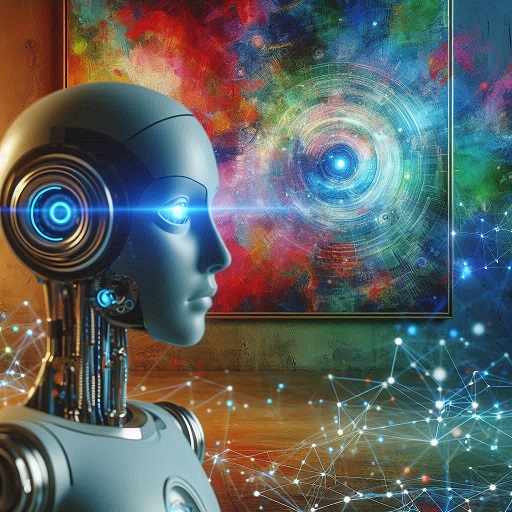Artificial Intelligence (AI) vision technology is rapidly reshaping industries globally, from healthcare to manufacturing. The Future of AI Vision Industry holds promise for revolutionary advancements, blending cutting-edge technology with real-world applications.
AI vision, often called computer vision, enables machines to interpret visual data in much the same way humans do. Through deep learning algorithms, AI systems can analyze images, videos, and patterns with incredible accuracy, unlocking new potential for automation and efficiency.

The global AI vision market is expected to reach USD 43.02 billion in 2029 from USD 14.85 billion in 2024, at a CAGR of 23.7% during the forecast period. The AI vision is one of the popular trends as all the industries and companies are in need of automation as well as intelligent decision-making. Both speed and real-time information of operations provide drive towards business attraction to adopt more advanced imaging and analysis technologies.
Download PDF Brochure @ https://www.marketsandmarkets.com/pdfdownloadNew.asp?id=33244653
AI vision technology is already being utilized across sectors such as automotive, healthcare, retail, and robotics. From autonomous vehicles to intelligent cameras, AI-powered vision systems are automating processes and improving accuracy in decision-making.
Technological Advancements Driving AI Vision
Deep Learning and Neural Networks in Vision Systems
The core of modern AI vision lies in deep learning. Neural networks, modeled after the human brain, process layers of information, allowing systems to identify objects, detect patterns, and make decisions based on visual inputs. This technology has propelled AI vision systems to new heights, driving efficiency in multiple industries.
Integration with Robotics and Automation
AI vision has become a pivotal component in the evolution of robotics. Vision-guided robots, capable of real-time image processing, are being used for tasks like quality control, pick-and-place operations, and complex assembly lines, pushing the boundaries of automation.
AI Vision in Industry 4.0
Role of AI Vision in Manufacturing and Production
In the context of Industry 4.0, AI vision is crucial for smart manufacturing. Through advanced monitoring, predictive maintenance, and real-time adjustments, AI vision enhances productivity and reduces waste, leading to a more sustainable production environment.
Quality Control and Inspection through AI Vision
AI-driven visual inspection systems are transforming quality control processes. By scanning products in real-time, AI vision systems can detect defects that might be missed by the human eye, ensuring higher standards of production quality.
Healthcare Applications of AI Vision
Diagnostic Tools and Medical Imaging
The future of AI vision in healthcare is particularly exciting. AI vision algorithms are revolutionizing diagnostics by interpreting medical images, such as X-rays and MRIs, with unprecedented accuracy. This leads to faster diagnosis and treatment, ultimately improving patient outcomes.
AI Vision in Surgery and Treatment Planning
AI-powered vision systems are also assisting surgeons by providing real-time guidance during complex procedures. These systems analyze live surgical footage, making critical suggestions based on the data, helping to minimize errors and improve precision.
AI Vision in Autonomous Vehicles
AI Vision’s Role in Self-Driving Cars
Self-driving cars rely heavily on AI vision to navigate their environment. From recognizing pedestrians and traffic signs to identifying road hazards, AI vision systems are the eyes of autonomous vehicles, paving the way for safer and more efficient transportation systems.
Future of AI in Traffic Management and Safety
AI vision is also playing a growing role in traffic management. By analyzing traffic patterns in real-time, AI vision systems can optimize traffic flow, reduce congestion, and enhance overall road safety.
AI Vision in Retail and E-Commerce
Enhancing Customer Experience with AI Vision
AI vision is transforming the retail industry by offering personalized shopping experiences. Smart cameras analyze customer behavior, helping retailers optimize product placement, inventory management, and customer engagement.
Security and Surveillance in Retail Spaces
Retail security is another area where AI vision excels. AI-driven surveillance systems can identify suspicious behavior, track individuals, and alert security personnel, significantly reducing theft and improving safety in retail environments.
Ethical and Privacy Concerns
Addressing Privacy in AI Vision Systems
With the rise of AI vision comes increased scrutiny over privacy. As more data is collected through surveillance and monitoring, it is essential to establish guidelines to protect individual privacy while still leveraging the benefits of AI vision.
Regulatory and Legal Considerations
Governments and regulatory bodies are beginning to implement legal frameworks surrounding AI vision technology. These regulations aim to balance innovation with ethical considerations, ensuring responsible development and deployment of AI systems.
The Future of AI Vision: Predictions and Trends
Evolution of AI Vision Algorithms
As AI vision algorithms continue to evolve, we can expect systems to become even more sophisticated. Future iterations will be faster, more accurate, and capable of tackling complex tasks in real-time across various industries.
Integration with Other Emerging Technologies
AI vision’s integration with other emerging technologies, such as 5G, edge computing, and augmented reality, will unlock new applications. These synergies will drive further innovation in areas like smart cities, healthcare, and transportation.
Challenges in AI Vision Development
Technical Barriers and Hardware Limitations
Despite its potential, AI vision faces technical barriers, including limitations in processing power and hardware. Addressing these challenges will be crucial for the technology’s continued growth.
Cost and Implementation Challenges
Implementing AI vision systems can be expensive, particularly for smaller businesses. As the technology matures, the cost of adoption will likely decrease, making it more accessible to a broader range of industries.
The future of the AI vision industry is bright, with countless opportunities for innovation and application. As technology advances, we can expect AI vision to become an integral part of our daily lives, transforming industries and improving efficiencies worldwide.
